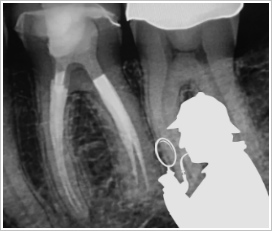
Thanks to a rock-hard bagel and a chipped molar, I’ve become a zealous advocate of root-cause analysis.
You’re familiar with the concept: Problem-solving works best when it starts with a deep dive to find the causes of problems, which are much different than surface-level symptoms.
Root-cause analysis is common sense, but it gets short shrift in most workplaces. When trying to solve problems, many people skip the analysis, make assumptions, and rush to solutions.
That’s what happened with my chipped molar.
My dentist took a look, judged the tooth to be okay, sanded it down at the corner, and sent me on my way.
Two weeks later it chipped again. The dentist took another look, installed a crown, and predicted a long and happy molar life.
But a month later, pain set in. This led to a root canal and pain relief, followed two months later by pressure sensitivity that was more subtle but ongoing.
That’s when the real fun began: a year-long series of trips to see my dentist (four times), an endodontist, a second endontist (second opinion), a gum specialist, and an oral surgeon.
Most were left scratching their heads, but two of these people took an activist posture right away, recommending that I have the tooth “removed” (their word).
It’s one thing to talk about root-cause analysis in the work context – and something else entirely when we’re referring to literal roots, when they’re in our jaw, and when there’s talk of yanking them out. So I was pleased beyond description when the oral surgeon took a much different approach, coming across more like Sherlock Holmes and less like the Terminator.
He was all about analysis. He took his time. He reviewed the case file in detail. He ordered up a special x-ray to get a better inside look. He ruled out an infection. He took photos of the gum, sending them to a colleague for an expert opinion.
When he called me a week later to discuss his findings, he got right to the point: “Extraction has a certain degree of finality. So let’s not rush into it unless we absolutely have to.” I couldn’t agree more.
“You report that the pressure sensitivity is moderate. My recommendation is that we take no action for about ten months. We’ll see whether the symptoms evolve, which might give us more insights. And we can get another x-ray to see if there are any visible changes below the gum line.”
Sherlock Holmes indeed! This oral surgeon was digging deep for more information to make a better decision – instead of digging deep to detach me from my precious (and possibly fine) molar.
It’s now two months later. The tooth is still with me, and the pressure sensitivity seems to be lessening. We’ll see what happens as the months unfold, but to say the least, I’m grateful for this doctor and his commitment to root-cause analysis.
The fact is, he models what we all should be doing at work.
It’s time-consuming to take a problem and examine why it’s happening – then to ask why again and again to get a deeper understanding. It’s tedious. It’s hard work. But it’s the surest way to find best-fit solutions.
Chew on that the next time you encounter a problem at work. Just be sure to avoid the rock-hard bagels.




